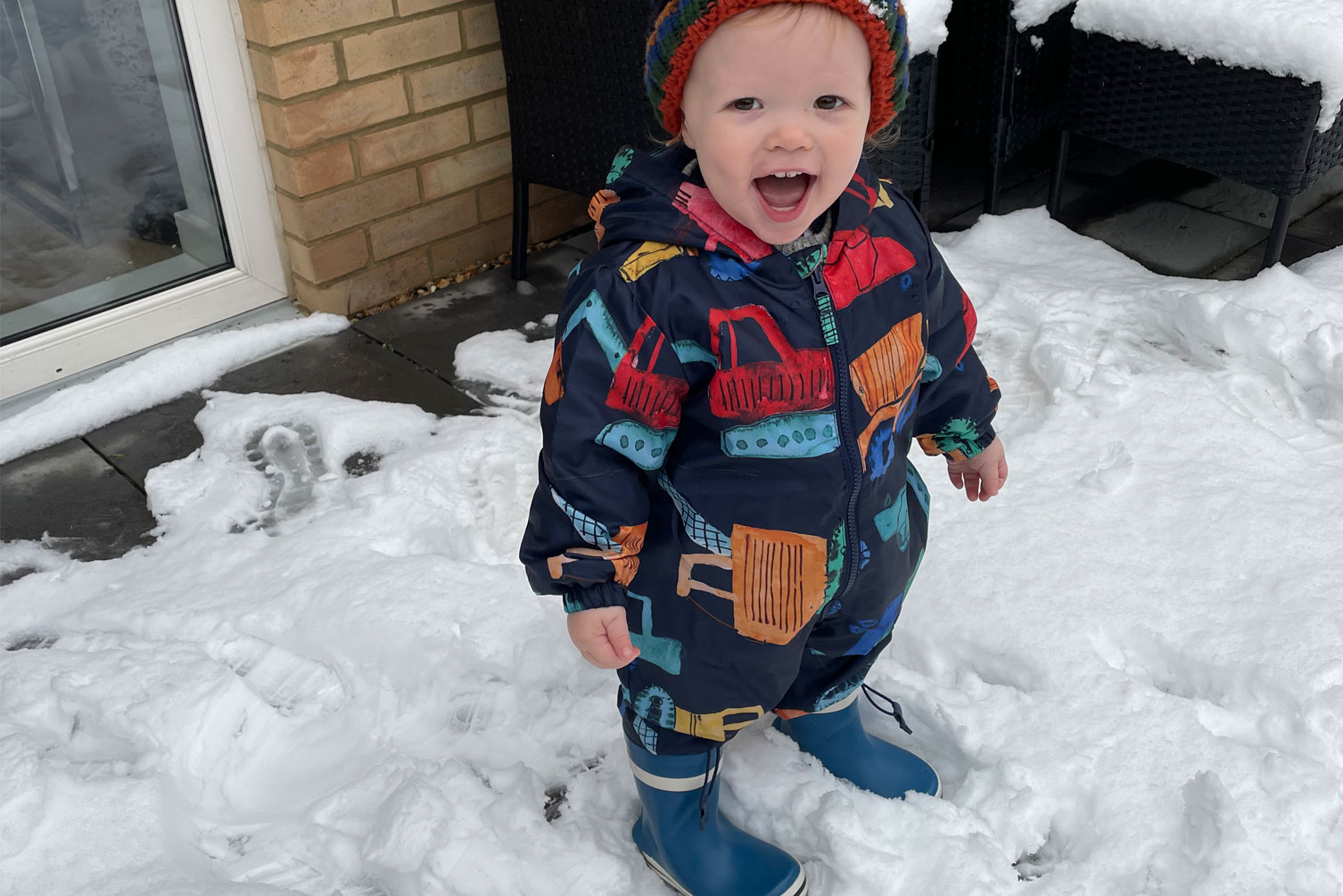
Whether it’s sunny, windy, raining or snowing, it’s recommended that your children get an average of around 60 minutes of exercise per day. So even when it’s cold outside, you should try to encourage your children to get active and burn off their (seemingly endless) energy. This means you have to dress them appropriately for the weather, no matter what it’s doing!
When it comes to snow though, it probably won’t take much effort to encourage your kids to play outside. In fact, they’ll probably be out the door by the time you’ve yelled “Put your coat on!”. But it’s so important that they're dressed appropriately to keep them lovely and warm when it’s around zero degrees.
Below, you can find some easy ways to keep your kids warm in the snow, no matter whether they are sledging, ice skating, tobogganing, making a snowman or something else just as fun.
Layers are the easiest and most obvious way to stay warm. Between each layer is a lovely, warm pocket of air that traps your body heat. The more layers you have, the toastier you are.
When dressing your kids to play in the snow, you might want to put them in a T-shirt, a long-sleeved jumper, then a fleece, and finally a waterproof jacket. A waterproof jacket will prevent the clothes underneath from getting wet and cold, while also holding the heat in.
If they’re lying in the snow, making snow angels or stuffing handfuls of cold snow down each other’s backs, they should have enough layers on to keep the snow and the cold out.
Your extremities are usually the first to feel cold. This is because your body tries to conserve heat, but it also sends blood to the places that need it most, like your organs. It’s why you end up with a cold nose, hands and ears.
Thick, woolly socks inside some winter boots will help to keep their feet warm, while gloves are great for their little hands. A hat will cover and protect their ears, but unfortunately there’s not much you can do for a cold nose!
Any sort of movement will increase your heart rate, so when your kids are having a snowball fight or racing sleds down a hill, their blood pumps faster. This can make them feel warm, even when it’s a lower temperature outside. You don’t have to worry about them getting overly cold when this is the case. If anything, it’s worth checking that they aren’t overheating ‒ with all those layers on, they may get too hot once they’re on the move.
Sometimes, you need to reheat from the inside and a warm drink is exactly the thing needed to thaw your fingers. If your children enjoy a hot chocolate or even a decaffeinated tea, you could bring some along in a flask (just make sure it’s not piping hot when serving!).
Practical footwear is a must in the snow. Not only can it prevent slipping or falls, but it will also act as a barrier, keeping your children’s socks and feet dry. Cold feet can quickly bring down your body temperature, so prevent this from the get-go.
As children’s shoes experts, we’d recommend that little ones wear wellies or boots that keep their feet dry. Wellies are especially good in deep snow, or when your kids want to go splashing in puddles. Their height reduces the amount of water that can get in and their deep tread means they have excellent grip in icy conditions.
A good pair of winter boots will do the same job, but they should be waterproof to keep water out. If this isn’t the case, you can apply a waterproof protector spray to do the job.
They’ve had a whale of a time running through the snow, creating snowmen and snowdogs (and snowcats and snowkids), but now they can’t feel their fingers and their clothes are a bit damp. How do you warm them up when they come into the house?
It’s important that they don’t warm up too quickly. Putting their hands under a hot tap or on a radiator can cause chilblains, which can be slightly uncomfortable. Their skin might go red or purple, and they may experience a mild burning or tingling sensation. For this reason, avoid putting them straight into a hot bath too.
Instead, remove their wet clothes and replace them with dry ones. Then, let them acclimatise slowly to the warm temperature of your house.
Photo credit: @angelawhite_uk
Author: Click Consult, published 14-12-2023.